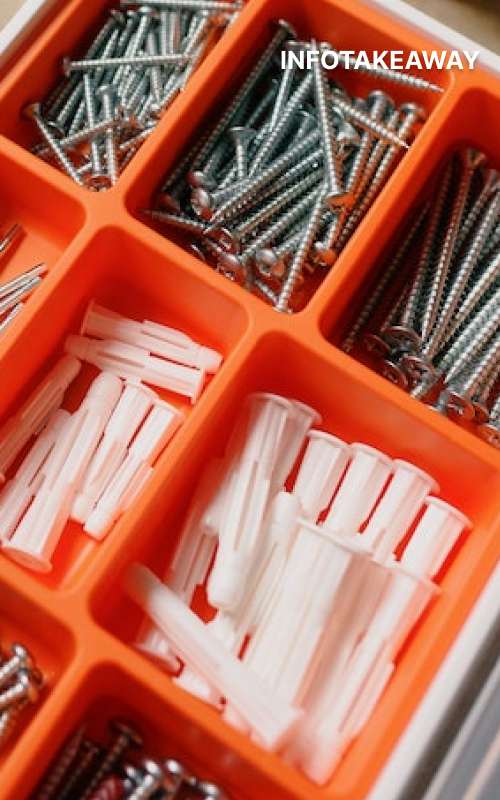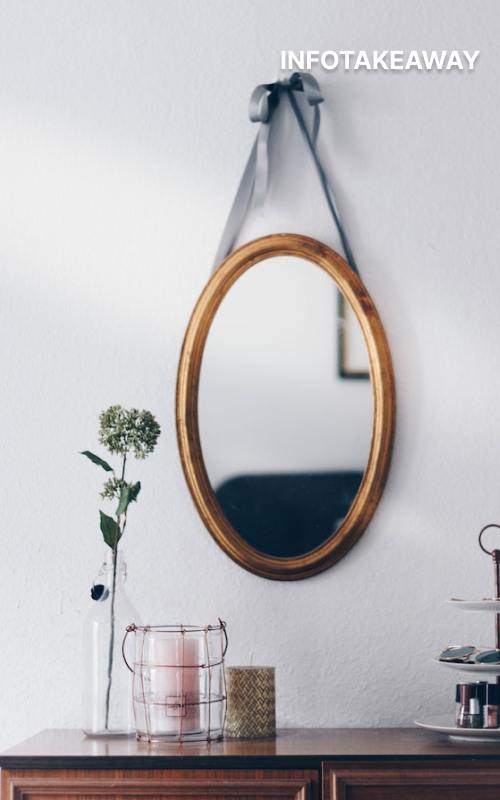I was helping a friend hang a mirror in their room, so I turned to the internet for help. There are so many ways to do it, and I wanted to ensure we did it right.
After a lot of research and trial & error, I finally found a great way to do it, and today, I will share that with you.
You can easily hang a mirror on a wall without professional help. Have tools handy such as screws, an electric drill, and a measuring tape. Next, drill your screws into a stud. If you cannot find or use a stud, use drywall anchors. Lastly, hang the mirror from the screws, and You’re done!
Well, that was a very brief summary, and the actual process of hanging a mirror is a bit more lengthy. You might have questions such as how heavy the mirror can be.
When to use nails or drywall anchors? Can you hang a mirror without nails? Or what type of wall do you have?
Keep reading for a more detailed guide on hanging a mirror on the wall.
How To Hang Mirror On Wall Step By Step Guide
Now that you know the basic idea of hanging a mirror, it’s time to get into the nitty-gritty of the process.
Here are the steps you’ll need to take to safely and securely hang your mirror:
The Tools You’ll Need
Make sure you have all the tools at home before you begin. You don’t want to make a second trip to the hardware store just because you forgot something. Here’s a table of all the tools you’ll need to hang a mirror.
| Tools You’ll Need | Reason |
| Measuring tape (compulsory) | You’ll need a measuring tape to measure the dimensions of the mirror and make the markings on the wall. |
| Level (optional) | You’ll need a level to make sure the drills you make on the wall align horizontally. |
| Screws and nails (compulsory) | You’ll use nails with a hammer or screws with an electric drill on a stud. |
| Hammer (compulsory) | You will need it to hammer the screws in the wall. |
| Electric Drill (compulsory) | If you are using screws to hold your mirror, you’ll need an electric drill |
| Drywall anchors or toggle bolts (compulsory) | You’ll use these on a hollow wall such as drywall without a stud behind it. |
Out of screws and nails, we suggest you use screws as they give a better holding power as compared to nails. If you use screws, you’ll definitely need an electric drill.
Moreover, you’ll only use drywall anchors or toggle bolts if you can’t find a stud in your wall. You can’t drill screws directly into drywall and expect it to hold something since it’ll pop right out.

Drywalls are hollow, which is why you’ll need a drywall anchor to hang your mirror. You might even need a toggle bolt which is a stronger variant of drywall anchor in case your mirror is heavy.

We’ll discuss each option in detail so keep reading.
Find The Perfect Location
There are a few things you’ll want to keep in mind when choosing the perfect location to hang your mirror.
First, you’ll want to make sure the mirror is at eye level at around 57 inches off the ground. This will ensure that you get the best possible reflection when you look in the mirror.

Second, you’ll want to make sure there’s plenty of light in the room. A well-lit room will make it easier to see your reflection, and it will also help to make the room look bigger and more open.
Third, you’ll want to consider the placement of the mirror in relation to the rest of the room. You’ll want to make sure the mirror isn’t placed in a spot where it will reflect something that you don’t want to see, like a toilet or a trash can.
Finally, you need to check the possibility of hanging the mirror in the location you chose.
Below are a few important points regarding your wall type to keep in mind when choosing the location for your mirror.
Using A Stud
When hanging a mirror, it is important to find a place on the wall that has a stud supporting it. This will ensure that the mirror is properly secured and will not fall and break.
Studs are the vertical supports that are used to construct walls. They are typically made of wood and are placed every 16 inches or so on average.
To find a stud, you can use a stud finder tool or simply tap on the wall until you hear a solid sound, indicating that there is a stud behind the drywall.
Once you have found a stud, mark the spot with a pencil so you know where to drill the pilot holes for the screws. Again, you can use nails as well on a stud but we suggest using screws.
Location Without Stud
On the other hand, if you can’t find a stud or the location you pick for your mirror doesn’t have a stud behind the wall, worry not as you can use drywall anchors.
They are used in walls that are made of drywall and plaster where there isn’t a stud behind the wall.
There are many different types of drywall anchors, but they all work by spreading the load of the screw or nail over a larger area.
This helps to prevent the screw or nail from pulling out of the wall over time.
Remember, you cannot use nails or drill screws directly into a hollow wall as they’ll pop out right away since there isn’t much to bear the weight of the mirror.
Brick all the way
If you have a masonry wall or brick wall, you can directly hammer the nails into the wall and it’ll hold your mirror. You can also drill screws into a brick wall, either one is fine.
How Heavy Is Your Mirror?
Now that we’ve decided on a location for your mirror, next we need to discuss the weight of your mirror. The weight of the mirror will be somewhere on your mirror packaging’s description.
If you don’t know the weight of your mirror, you can always find it using a bathroom scale.
First measure your weight, then hold the mirror and step onto the bathroom scale, now subtract the later value from your original weight and you should get the weight of the mirror.
You’ll use a screw or drywall anchor according to the weight of your mirror. If you’re hanging a heavier full-body mirror, you’ll need a stronger anchor, like a toggle bolt as normal plastic drywall anchors will not be enough.
Decide screws and anchors to the weight of your mirror
If you’re drilling screws into a stud, you can hold heavier mirrors with ease without the worry of them falling down.
If you’re drilling drywall anchors into drywall directly, then you need to keep the weight of the mirror in mind.
Normal plastic drywall anchors can support up to 30-pound weights. Toggle bolts are a stronger version and they can support up to 50 pounds. Lastly, you can use steel hollow wall anchors which can support up to 100 pounds.
The Process Of Hanging A Mirror
Now that we know all the details, let’s discuss hanging the mirror on the wall:
- After finding your best location, hold the mirror against the wall and mark the wall at the top of the mirror’s frame.
- Put the mirror back down and using a measuring tape, find the center point of each side of the mirror where the hooks are.
- Once you have the measurements, mark the spot on the wall where you’ll be hanging the mirror.
- Next, use a drill to insert screws into the wall at the marked sports. In case of anchors, you need to make pilot holes first before inserting the anchors.
- Be sure to use a drill that is a bit smaller than the drywall anchors you’ll be using to hang the mirror.
- This will ensure that the screws will be able to grip the wall securely.
- Use a level to make sure the holes are level.
- Lastly, carefully hang the mirrors on the nails on the wall and you’re done!
Conclusion
By now, you should be a pro at hanging mirrors. We discussed all the steps involved in hanging a mirror in detail.
Remember, you should always prioritize hanging the mirror using a stud, as they offer more support and only move to hollow sections of your drywall unless there’s no other option.
You can use normal nails and screws on studs but for drywall without studs, you need to use an appropriate drywall anchor according to the weight of your mirror.
We hope we were able to help you hang that mirror. Check out How to hang pictures on wall, and Ideas for hanging stuff on wall. For more similar content, visit our homepage. Let us know if you have any questions or thoughts in the comments below!
